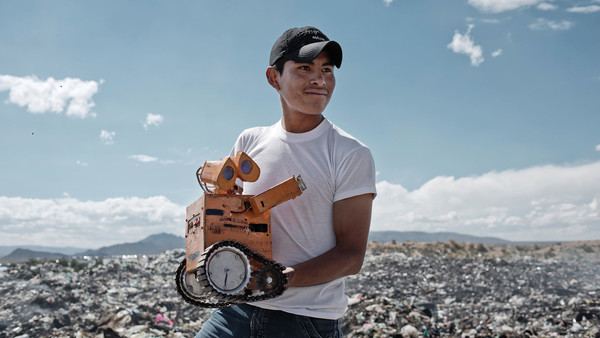
‘I turned electronic waste into robots’
Source: www.ft.com
Photograph: Valentino Bellini
Esteban Quispe made his very own Wall-E from materials at his local dump
I was only 10 when I first watched the Pixar film Wall-E in 2008. I immediately liked the character — that small, ugly, square-shaped robot with a far bigger ecological conscience than any human being I know. I couldn’t stop thinking I was a bit like Wall-E because I, too, wanted to make my town less polluted. I also always liked the idea of recycling the electronics that people throw away, so I decided to try and use discarded items to make my very own Wall-E.
It took me six years to do it, but I finally finished making my replica of the robot in 2014. As well as building it, I had to find a way to make it move, so I created some software to send it some basic commands, which I then installed on my mobile phone. I got all the materials I needed from the local waste dump because my family would never have been able to afford to buy them new. People throw all kinds of stuff there, from animal carcasses to food and electronics.
I was born and raised in Patacamaya, one of the poorest communities in Bolivia. My mother never had the time to study because her family was very poor and she had to start working when she was young. My father was a construction worker until a couple of years ago, when chronic back pain forced him to quit his job.
I owe my passion for electronics to my father. He used to make wooden toy cars for me and my brother when we were little, and I would always sit next to him. Gradually, I began practising on my own, at first making small objects from copper wires and then moving on to increasingly complex designs — a toy car with bulbs that light from left to right, like the Kitt car from the 1980s American TV series Knight Rider, or an LED cube which displays 3D images.
When I was 11, I started selling my first creations on the street. Thanks to the money I made this way, my parents were able to buy schoolbooks for me and my younger brother, Hernan. He is more environmentally conscious than many adults I speak to. I like to think I can inspire him and help him understand that there is so much we can do.
Most of us live in poverty, and there are still many young people who do not have access to secondary education or even basic sanitation. Very few of my neighbours understand the value of a clean environment. When I tell them that we should all make an effort to keep our fields and lands clean, they answer that they have no time to think about this. Having grown up here myself, I understand how poverty and a lack of infrastructure and education make it impossible for many to be concerned about recycling. I have been collecting e-waste at the local dump for several years now but I am sure I could achieve so much more in a richer place like Europe or the US.
After I won first prize in my high school robotics competition with Wall-E last year, many reporters came to interview me and I became a bit of a celebrity in Bolivia. Then the Universidad Católica of La Paz offered me a scholarship for a five-year electromechanics course, which I began in January. My mother still cries when she tells people at home I am at university.
When I started making Wall-E, most people around me would say, “You are only a teenager, you should learn a useful job to help your family.” They were partly right. But I know I can help my family far more effectively if I go on studying to become an engineer or robotics expert. I now hope to take postgraduate studies in a country with more sophisticated technological instruments. That would allow me to invent more and to invent better.
